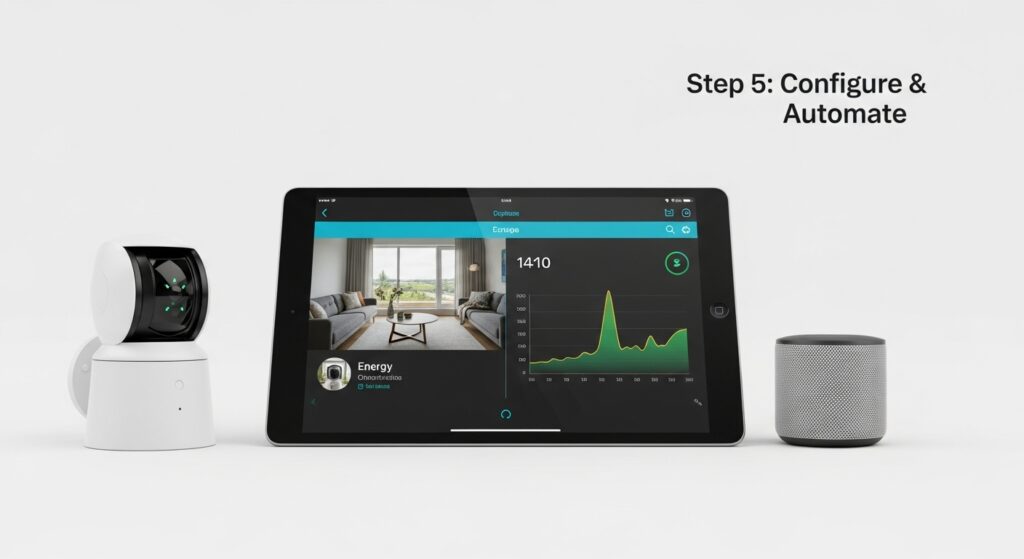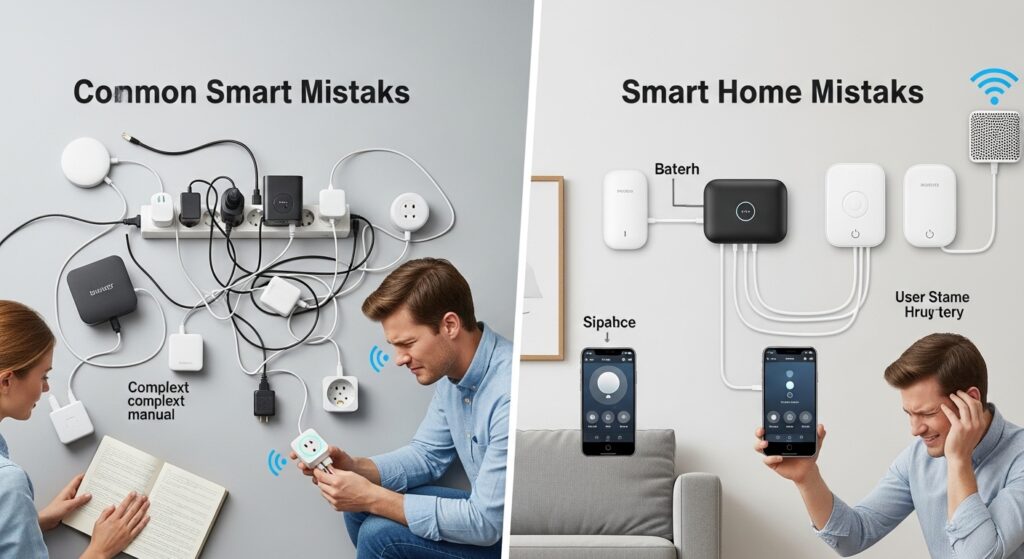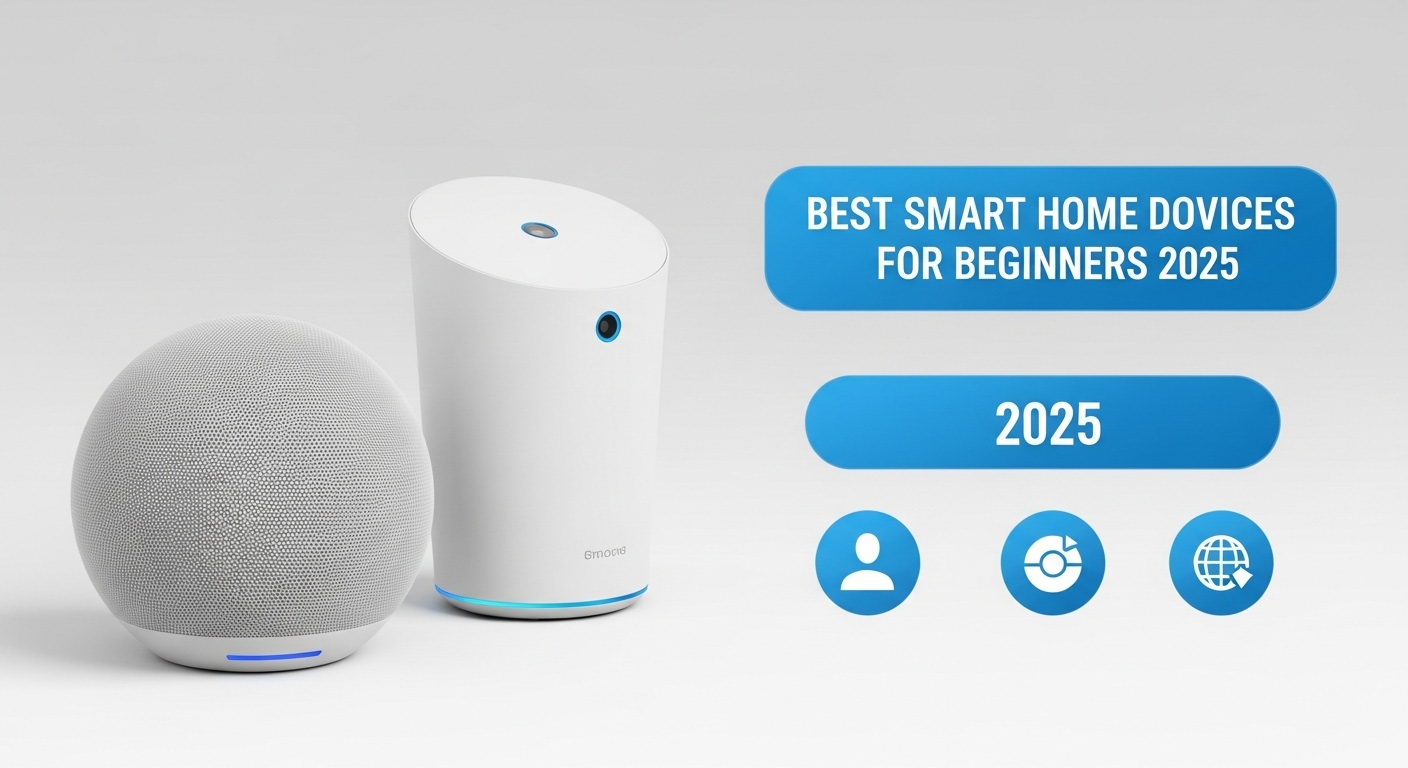Smart home devices are easier to use than ever. You don’t need to be tech-savvy to start. Most devices work right out of the box.
Home automation saves time and money. It also makes your house safer. The best part? You can start with just one device.
Top 10 Smart Home Devices Every Beginner Should Buy in 2025
Amazon Echo Dot costs $40 and controls everything. Just say “Alexa” and give commands. It connects to thousands of devices.
Smart plugs turn any device smart instantly. TP-Link Kasa costs $15 each. Plug in your coffee maker and control it from bed.
Philips Hue bulbs change colors and brightness. They last 25 years and save electricity. Installation takes 30 seconds.
Ring Video Doorbell shows who’s at your door. See visitors from anywhere using your phone. The basic model costs under $100.
Nest Thermostat learns your schedule automatically. It saves 15% on energy bills yearly. The device pays for itself quickly.
Smart switches control entire rooms at once. Treatlife switches cost $20 each. No need to replace every bulb.
Wyze Camera records in HD for $35. Works day and night perfectly. Cloud storage costs just $2 monthly.
August Smart Lock eliminates physical keys. Installs over existing locks easily. Create codes for family and guests.
Samsung SmartThings Hub connects different brands. Works with 500+ device types. Costs around $70 total.
Roku Ultra makes any TV smart. Stream Netflix, YouTube, and more. Voice remote included for easy control.
READ THIS BLOG : Crypto Tax Rules Indonesia Overseas Exchange 2025
How to Set Up Your First Smart Home System – Step by Step Guide?
Choose one platform first. Amazon Alexa has most device support. Google Assistant answers questions better.
Check your Wi-Fi strength everywhere. Smart devices need good internet. Add extenders if needed before buying devices.

Start with one room only. Don’t try automating everything immediately. Pick your bedroom or living room first.
Download apps before installing devices. Read instructions completely before starting. Most setups take under 10 minutes.
Test each device thoroughly first. Make sure everything works perfectly. Add more devices only after success.
Best Smart Speakers and Voice Assistants for New Users
Echo Show 5 has a screen. Watch videos and see camera feeds. Perfect for kitchens and bedrooms.
Google Nest Audio sounds amazing. Great for music lovers everywhere. Works best with Android phones.
Apple HomePod Mini connects to iPhones perfectly. Siri understands natural speech now. Sound quality beats bigger speakers.
Voice assistants learn your habits. They get smarter over time. Start with simple commands first.
Smart Lighting Solutions That Won’t Break Your Budget
Wyze bulbs cost $8 each. Work exactly like expensive options. Perfect for budget-conscious buyers.
Smart switches control multiple lights. One switch handles entire rooms. More cost-effective than individual bulbs.
Motion sensor bulbs turn on automatically. Great for hallways and bathrooms. No more dark fumbling around.
Schedule lights to save money. Turn off automatically when away. Can reduce electric bills significantly.
Essential Smart Security Devices for Home Protection
Ring Alarm protects your entire house. No monthly fees required initially. Professional monitoring costs $10 monthly.
Wyze cameras cost $35 each. Record in full HD quality. Work indoors and outdoors perfectly.
Smart door locks eliminate lost keys. August installs over existing hardware. Create temporary codes for visitors.
Window sensors detect break-ins immediately. Stick onto frames with adhesive. Send alerts to your phone.
Smart Thermostats vs Regular Thermostats – Which is Better?
Smart thermostats learn your routine. Adjust temperature automatically throughout day. Save 20% on energy bills.
Control from anywhere using phone. Cool house before arriving home. Adjust while lying in bed.
Regular thermostats waste energy constantly. No learning or remote features. Smart versions pay for themselves.
Work with other smart devices. Turn off when nobody’s home. Create perfect temperature scenarios automatically.
Smart Plugs and Outlets – Transform Any Device Instantly
Amazon Smart Plug costs $25. Works with any electrical device. Control lamps, fans, anything plugged in.
Monitor energy usage in real-time. See which devices waste electricity. Make informed decisions about replacements.
Schedule devices to save money. Turn off during work hours. Prevent standby power waste overnight.
Smart outlets replace wall sockets permanently. No bulky adapters blocking space. Cleaner, more professional appearance.
Choosing the Right Smart Home Ecosystem in 2025
Amazon Alexa supports 100,000+ devices. Easiest platform for beginners. Voice control works excellently.
Google Assistant answers questions better. Connects to Gmail and Calendar. Best for Android users.
Apple HomeKit focuses on privacy. It takes longer to set up. Perfect for iPhone users.
SmartThings connects everything together. Works with all major brands. Best for advanced users.
Common Smart Home Setup Mistakes to Avoid
Don’t buy incompatible devices randomly. Stick with one ecosystem initially. Check compatibility before purchasing anything.
Weak Wi-Fi causes constant problems. Upgrade the internet before adding devices. Every device needs reliable connection.

Don’t rush through installations quickly. Read all instructions completely first. Take time understanding each feature.
Change default passwords immediately after setup. Enable security features when available. Protect your smart home network.
READ THIS BLOG : Best Decentralized Exchanges 2025: Complete Guide to Low-Fee DeFi Trading
Smart Home Device Compatibility Guide for Beginners
Zigbee devices need special hubs. More reliable than Wi-Fi options. SmartThings supports Zigbee perfectly.
Wi-Fi devices connect directly to the internet. Easier to install initially. Can slow network with too many.
Matter protocol works with everything. New universal standard for 2025. Buy Matter devices when possible.
Always check compatibility before buying. Visit manufacturer websites for details. Avoid mixing incompatible systems together.
Frequently Asked Question
What’s the cheapest way to start?
Buy smart plugs and bulbs first. Total cost under $50 initially. Provides immediate automation benefits.
How many devices can Wi-Fi handle?
Most routers support 25-30 devices. Start with 5-10 devices first. Monitor internet speed regularly.
Do smart devices increase electricity bills?
No, they usually decrease consumption. Smart thermostats save 15-20% yearly. Scheduling prevents energy waste.
Can renters install smart devices?
Yes, most require no modifications. Smart plugs and bulbs work. Battery devices need no wiring.
How long do devices last?
Quality devices last 7-10 years. Battery devices need replacement sooner. Software updates extend lifespan.
Conclusion
Smart homes start with simple devices. Begin with plugs, bulbs, and speakers. Add more devices gradually over time.
Focus on solving real problems. Don’t buy gadgets for novelty. The best devices get used daily.
Smart home automation should simplify life. Take time learning each device. Build your perfect system slowly.

David is a seasoned SEO expert with a passion for content writing, keyword research, and web development. He combines technical expertise with creative strategies to deliver exceptional digital solutions.







